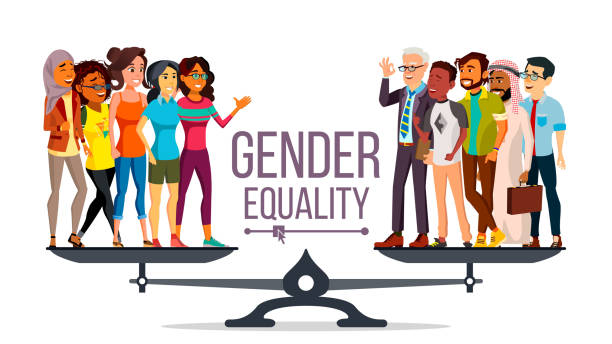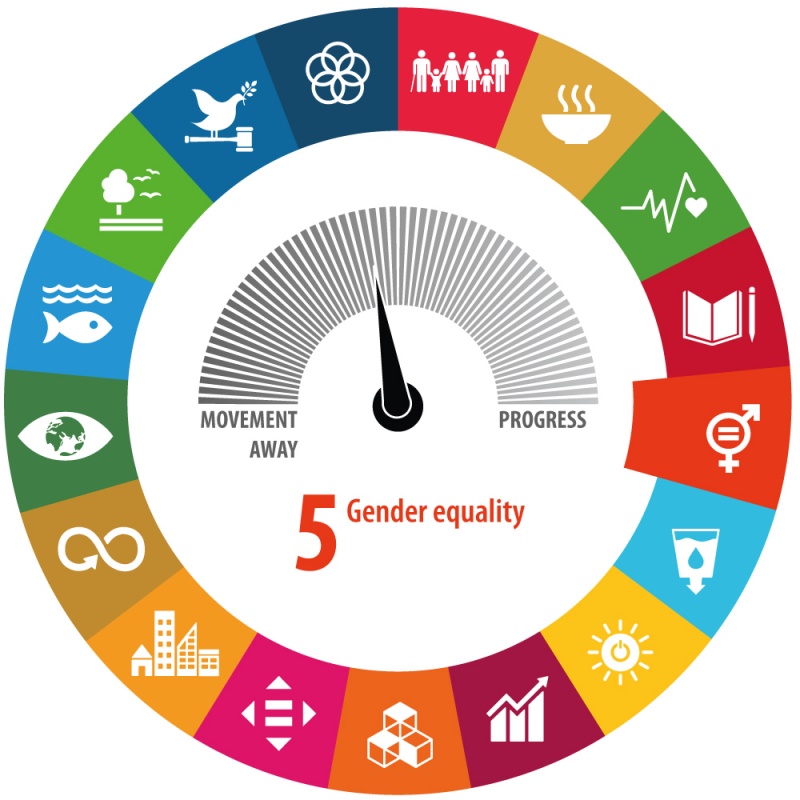
In this modern era, one would have thought that gender inequality is probably an outdated or resolved matter. However, transcending generations, gender inequality still represents a major contemporary issue. First and foremost, in order to understand what gender inequality is about, it is important to grasp the meaning of gender equality.

The gender equality concept
Such a concept was born in the 1940s, drawing from the unprecedented atrocities experienced during the world wars. Hence, with the participation of many countries, a cornerstone document “The Universal Declaration of Human Rights” was produced. One of its salient points within Article 2, stipulates that everyone, irrespective of gender, “is entitled to all rights and freedom”.
Although this declaration of great value is not legally binding, it underpins the raison d’être of the gender equality concept. In fact, it now serves as a theoretical framework for a THRIVING world. Accordingly, gender equality encompasses the right to be equal and free from any discrimination that is based on sex. Therefore, anything that does not align with gender equality, falls under the gloomy umbrella of gender inequality. For instance, income inequality, disparities in opportunities that are based on gender, gender-dependent political involvement, disproportionate educational access to the lack of bodily autonomy, or lack of religious freedom are all forms of gender inequality. Hence, being multi-dimensional in nature, the solution to gender inequality warrants multi-faceted approaches.
Who should be concerned?
On the contrary to widespread misconceptions, gender inequality does not concern women only. In fact, it is an affair of paramount importance to all. It is not justifiable that because more women than men are subject to inequality the matter should be confined to women. This is especially so when often men are the perpetrators of such inequalities. For example, female genital mutilation, sexual harassment or exploitation, and/or forced marriage are often man-driven. Moreover, as supported by a large body of evidence, gender inequality has an overarching impact on entire nations. Whether by reducing economic growth (Altuzarra et al., 2021; Seguino, 2000), increasing infant mortality rates (Brinda et al., 2015), wrecking peace and security (Davies et al, 2017), or even creating legal conflicts, entire body politics can be affected. Hence, the pertinent question is: “Where does the world stand right now with regards to gender equality?”
The current state of affairs
Relevant gender gap statistics
Conceptualised in the wake of the World Economic Forum in 2006, The Global Gender Gap Index, as posited in the yearly Global Gender Gap Report, has been tracking the progress of gender disparities across four main indicators:
- Economic participation and opportunity
- Educational attainment
- Health and survival
- Political empowerment
By contrast, while the 2018 Report’s projections pointed towards another 108 years of gender inequality across 106 countries worldwide, projections from the latest 2021 report are worse. The gender gap for 156 countries altogether will take another 135.6 years to close globally. Noting that this difference in trend projections cannot be attributed to the different number of countries used for 2018 and 2021 reports respectively, as in both instances, the population-weighted average is almost the same, hence, the gender gap is undeniably persistent and widening. One significant disparity contributing to the gender gap is income inequality as shown below.

Isn’t such data alarming enough for a wake-up call? Don’t we need a radical change?
Country-specific trends
While some countries, such as the Nordic countries, Lithuania, Rwanda, New Zealand, Namibia, and others are improving their gender gap scores, many large countries have demonstrated a reduced performance in gender equality explaining the present data. Below, the ten countries with the least gender gap (as per the global gender gap index score) have been enlisted, followed by the last ten countries with the highest gender gap:
| Top 10 countries with smallest gender gap | Corresponding gender gap index score | Worst 10 counties with largest gender gap | Corresponding gender gap index score |
| Iceland | 0.892 | Afghanistan | 0.444 |
| Finland | 0.861 | Yemen | 0.492 |
| Norway | 0.849 | Iraq | 0.535 |
| New Zealand | 0.840 | Pakistan | 0.556 |
| Sweden | 0.823 | Syria | 0.568 |
| Namibia | 0.809 | Congo | 0.576 |
| Rwanda | 0.805 | Iran | 0.582 |
| Lithuania | 0.804 | Mali | 0.591 |
| Ireland | 0.800 | Chad | 0.593 |
| Switzerland | 0.798 | Saudi Arabia | 0.603 |
Besides, across the key dimensions, currently, political empowerment has the largest gender gap, followed by economic participation and opportunity. However, if there is one place we are doing relatively well, it is in terms of educational attainment, health, and survival. Indeed, the gender gap in this domain is about to close in a span of approximately 14 years. However, are the set goals being achieved?
The SDG 5 – Gender Equality

With respect to the Sustainable Development Goals, the SDGs, and more precisely, SDG 5, gender equality was benchmarked as a goal to be achieved by the close of 2030. Nonetheless, as of today, the multiple targets within SDG 5 are unachieved and not even on track. Whilst some targets, such as forced marriages, women in leadership roles, and female genital mutilation have shown some improvements, there has been a significant setback in recent times due to the COVID-19 pandemic. For instance, the rates of domestic violence (whether physical, sexual, or psychological) went up by 30% in certain parts of the world. This is unfortunate, especially when this SDG can detrimentally impact and prevent the other SDGs from reaching their respective set targets.
Low social mobility and gender inequality
Another important report to be aware of is The Global Social Mobility Report 2020. Basically, it sets forth a holistic measurement of the extent to which every person has a fair shot at fulfilling his/her potential. Unsurprisingly, the Nordic countries outperform the rest of the world. Hence, the direct linear correlation between income inequality and low social mobility explains why countries with the least gender gap have the best social mobility index.
Enablers and barriers
Culture
Based on the fact that Iceland remains at the topmost position for gender-equal countries of the world and Nordic countries have consistently been within the top five for some time, it is evident that countries who have been doing well in terms of gender equality are still doing very well. However, this prompts us to think about the potential reasons behind this consistency among Nordic countries. Would gender equality have a cultural impetus? Backed by evidentiary materials, such as Jayachandran et al. (2015), Inglehart et al. (2003), the answer would probably be yes. Additionally, from Table 1, it is noticeable that war-torn Muslim countries share approximately the same fate in terms of gender inequality. However, whether war or religious cultures account for this trend, is not unclear.
Therefore, I believe it is high time to further explore this outreach of culture, both as a barrier and an enabler, on the various dimensions of gender equality. This will help in understanding how to further incentivise other cultures to embrace gender equality at its best. Such an approach appears promising, especially if we take the examples of Namibia and Rwanda. These two Sub-Saharan countries with a longstanding history of predominantly patriarchal beliefs, cultures, and practices, have emerged as the most successful African countries in terms of gender equality as of 2021. Amidst neighbouring countries with large gender gaps, the two countries have reduced their gender gaps so significantly that they are both within the best 10 gender-equal countries, worldwide. Had acculturation towards acceptance of gender equality not been allowed; Rwanda or Namibia would still be mired in distress.
Political will and history
However, cultural change is understandably not the only driving force behind fostering gender equality in these countries. The specific history of each country also plays a part in creating political commitment towards gender equality. Subsequently, this leads to an appropriate constitutional restructuring. For example, post-genocide Rwanda was left war-torn with more women than men and there was no other way to look forward than to indulge the women in the reconstruction of Rwanda. Although this would not have been possible without the right leadership, gender equality gained further momentum when early female education and policy changes were prioritised.
All things considered, it is important to look into the individual history of a country and search for the determinants of enablers and barriers to inform strategies towards gender equality. What works for one country may work for another country, but a one size fits all approach may be counterproductive if the countries are fundamentally different.
Did COVID-19 play a part too?
Both during and in the aftermath of the COVID-19 pandemic, digitalisation and remote work have superseded normal work processes. As a result, working women not only have had to work from home but have also had to cope with additional pressures entailed in their roles as carers and educational supporters for children. Obviously, such a sudden paradigm shift has impacted men and women differently based on the different roles that they have in other spheres of life.
With domestic violence being found to have increased during lockdown periods in many countries and with more women being frontline workers in the battle against COVID-19, this dire time has had special challenges for women especially. Hence, women’s needs must be considered during the COVID-19 responses. The article: Unpaid care and domestic work: Barriers to equality elaborates on the practical solutions that can help women move up the gender gap ladder.
Utopia or not?
In short, achieving gender equality around the globe appears feasible if a concerted, collaborative approach is taken by the worldwide community. This starts with acknowledging the problem – hence this article. To sum up, with the right political will, country-specific approaches, cultural shifts, and women-centered solutions, wouldn’t we go a long way in bridging the gender inequality gap? Certainly, achieving gender equality is not utopic, but it requires an active effort for it to materialise into reality. Its realisation need not take more than a century!
References
Altuzarra, A., Gálvez-Gálvez, C., & González-Flores, A. (2021). Is gender inequality a barrier to economic growth? A panel data analysis of developing aountries. Sustainability, 13(1), 367.
Brinda, E. M., Rajkumar, A. P., & Enemark, U. (2015). Association between gender inequality index and child mortality rates: a cross-national study of 138 countries. BMC public health, 15(1), 1-6.
Davies, S. E., George, N., & True, J. (2017). The difference that gender makes to international peace and security.
Inglehart, R., & Norris, P. (2003). Conclusions: Gender equality and cultural change. In rising tide: Gender equality and cultural change around the world (pp. 149-164). Cambridge: Cambridge University Press. doi:10.1017/CBO9780511550362.008
Jayachandran, S. (2015). The roots of gender inequality in developing countries. economics, 7(1), 63-88.
Seguino, S. (2000). Gender inequality and economic growth: A cross-country analysis. World Development, 28(7), 1211-1230.























